FRTR at 30 Years: Grand Challenges and Opportunities for Advancing Remediation Technologies, Session 2
Sponsored by: Federal Remediation Technologies Roundtable (FRTR)
Archived: Wednesday, May 26, 2021
FRTR at 30 Years: Grand Challenges and Opportunities for Advancing Remediation Technologies, Session 2
2021-05-26
Federal Remediation Technologies Roundtable (FRTR)
The Spring 2021 Meeting of the Federal Remediation Technologies Roundtable (FRTR) will be held as two webinar sessions on May 19 and May 26, 2021. This special 30-year anniversary meeting will convene senior leaders from all FRTR member agencies to discuss progress in remediation programs and opportunities for innovative technology applications at complex sites. As always, FRTR meetings are open to the public.
FRTR's objectives for this meeting are to:
- Provide an overview of the grand remediation challenges facing member agencies over the next decade.
- Discuss specific technology needs across programs.
- Highlight agency program initiatives to advance technologies that will expedite and improve site cleanup.
Session 1: Grand Challenges
This session will consist of a virtual panel discussion by senior-level leaders from the FRTR member agencies involved in site remediation programs. The panel discussion will be facilitated by Dan Powell, Chief of the Technology Integration and Information Branch in U.S. EPA's Office of Superfund Remediation and Technology Innovation.
Session 2: Advancing New Technologies
This session will consist of a virtual panel discussion by senior-level leaders from the FRTR member agencies involved in research and application of new and innovative site characterization and remediation technologies at complex sites. The panel discussion will be facilitated by Kent Glover of the U.S. Air Force Civil Engineer Center. Dr. Glover is the Air Force Subject Matter Expert (SME) for Remediation Systems and the FRTR Steering Committee Chair.
The following agencies will be represented at this meeting:
- U.S. Air Force-Civil Engineer Center (AFCEC)
- U.S. Army Corps of Engineers (USACE)
- U.S. Department of Energy (DOE)
- U.S. Environmental Protection Agency (U.S. EPA)
- U.S. Geological Survey (USGS)
- U.S. Navy-Naval Facilities Engineering Systems Command (NAVFAC)
- U.S. Nuclear Regulatory Commission (U.S. NRC)
- National Institutes of Health-National Institute of Environmental Health Sciences (NIEHS)
- Strategic Environmental Research and Development Program (SERDP) and Environmental Security Technology Certification Program (ESTCP)
Accessibility, Recording, and Content Disclaimer
Rehabilitation Act Notice for Reasonable Accommodation
It is EPA's policy to make reasonable accommodation to persons with disabilities wishing to participate in the agency's programs and activities, pursuant to the Rehabilitation Act of 1973, 29 U.S.C. 791. Any request for accommodation should be made to Cindy Frickle at 703-603-8763 or frickle.cynthia@epa.gov, preferably one week or more in advance of the webinar, so that EPA will have sufficient time to process the request. EPA would welcome specific recommendations from requestors specifying the nature or type of accommodation needed. Please note that CLU-IN provides both alternate phone call-in options and closed captioning for all webinars, and requests for these specific accommodations are not necessary.
Webinar Recording
By participating in this CLU-IN webinar, you automatically agree to authorize recording of audio and visual content presented during this live event and consent to subsequent use of this recording in the public domain by the U.S. Environmental Protection Agency. This recording may include questions, comments and poll responses provided by you during the live event in addition to your name, voice, image or likeness. This recording will be made available after the conclusion of the live event as part of the CLU-IN webinar archives, and will remain available indefinitely. If you do not wish to consent to the recording, please do not join the live event, and contact Jean Balent at 202-566-0832 or balent.jean@epa.gov to discuss your concerns.
Content Disclaimer
This webinar is intended solely to provide information to the public. The views and opinions expressed as part of this webinar do not necessarily state or reflect those of the U.S. Environmental Protection Agency. It is not intended, nor can it be relied upon, to create any rights enforceable by any party in litigation with the United States, or to endorse the use of products or services provided by specific vendors. With respect to this webinar, neither the United States Government nor any of their employees, makes any warranty, express or implied, including the warranties of merchantability and fitness for a particular purpose, or assumes any legal liability or responsibility for the accuracy, completeness, or usefulness of any information, apparatus, product, or process disclosed, or represents that its use would not infringe privately owned rights.
Presenters:
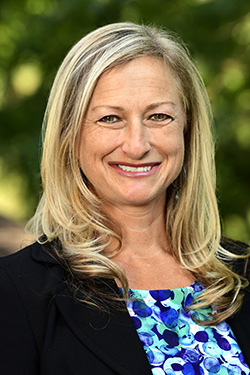 Heather F. Henry, Ph.D., Program Administrator, NIEHS Superfund Research Program (heather.henry@nih.gov)
Heather F. Henry, Ph.D., Program Administrator, NIEHS Superfund Research Program (heather.henry@nih.gov)
Heather Henry, Ph.D., is a health science administrator for the NIEHS where she oversees Superfund Research Program (SRP) grants that spans human health toxicology, risk assessment, detection technologies and remediation approaches. She provides guidance to potential applicants for SRP’s Multiproject Center Grants (P42s), Individual Research Grants (R01s), Small
Business / Technology Transfer Grants (R41-44; SBIR/STTR), and Conference Grants (R13). Heather studied plant-based environmental remediation
(phytoremediation) and ecological restoration as part of her doctoral work at the University of Cincinnati and as a Fulbright Postdoctoral Fellow at the University of Melbourne and University of Adelaide in Australia. She has been with NIEHS since 2006.
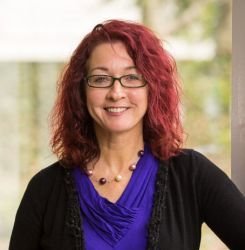 Andrea Leeson, Ph.D., Deputy Director & Environmental Restoration Program Manager
Strategic Environmental Research and Development Program (SERDP) and
Environmental Security Technology Certification Program (ESTCP) (Andrea.Leeson.civ@mail.mil or (571) 372-6398)
Andrea Leeson, Ph.D., Deputy Director & Environmental Restoration Program Manager
Strategic Environmental Research and Development Program (SERDP) and
Environmental Security Technology Certification Program (ESTCP) (Andrea.Leeson.civ@mail.mil or (571) 372-6398)
Andrea Leeson has been the Deputy Director of SERDP and ESTCP since 2014 and the Program Manager for Environmental Restoration since 2001. Prior to that, she was a Research Leader at Battelle Memorial Institute where she conducted scientific research on in situ bioremediation and the design and implementation of innovative biological, chemical and physical treatment technologies for site remediation and industrial wastewater. She received her doctoral degree in Environmental Engineering from The John Hopkins University.
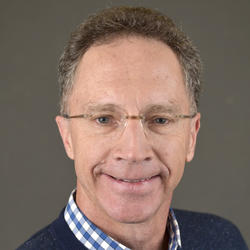 Geoffrey S. Plumlee, Ph.D., Chief Scientist of the USGS (gplumlee@usgs.gov)
Geoffrey S. Plumlee, Ph.D., Chief Scientist of the USGS (gplumlee@usgs.gov)
Dr. Geoff Plumlee has served in his current position (first as Senior Science Advisor to the USGS Director and now Chief Scientist of the USGS) since February 2019. In this position, Geoff provides strategic scientific vision and counsel to the Director and other executive leaders of the USGS on inter- and transdisciplinary USGS science research priorities, activities, capabilities, and partnerships. From May 2016 to early 2020, Geoff was the USGS Associate Director for Environmental Health, where he led USGS research at the intersection of the environment and health.
Geoff brought to these executive leadership positions over 30 years of research and science leadership experience with the USGS, as well as his ability to seek out and establish successful research collaborations with scientists from a broad range of earth, health, social, emergency response, and engineering science disciplines. From 1983 through May 2016 he helped lead and carry out many research projects on linkages between mineral resources, the environment, disasters, and human health.
Geoff is a Fellow of the Geological Society of America (GSA) and past Chair of the GSA Geology and Health Division. He is a member and past Council Member of the American Geophysical Union (AGU), where he proposed the idea for and worked to help establish the new AGU GeoHealth Section. Geoff has been an adjunct clinical assistant professor at the University of Colorado School of Public Health since 2009, where he helped design and for 10 years lectured in a transdisciplinary course on environmental exposures and health.
Geoff is author or co-author of more than 140 scientific papers, including many in technical journals and books across a wide range of scientific disciplines such as environmental geochemistry, public health, natural hazards, economic geology, and geology. Geoff has received the Department of the Interior Superior and Meritorious Service awards, the GSA Geology and Health Division Distinguished Service Award, and the Society of Economic Geologists Waldemar Lindgren (Early Career Scientist) Award.
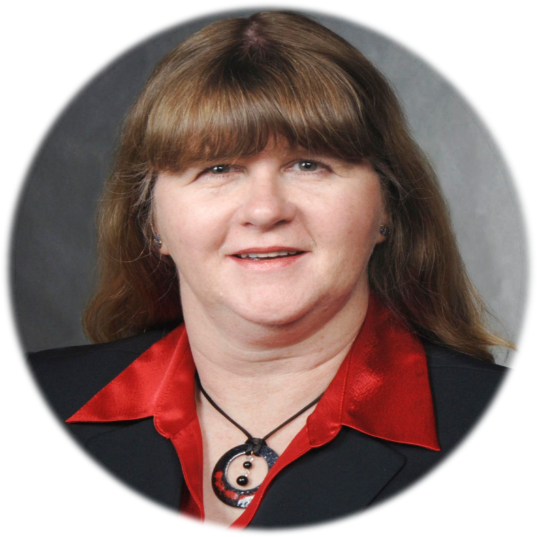 Patricia Holahan, Ph.D., Director, Division of Decommissioning, Uranium Recovery and Waste Programs, Office of Nuclear Material Safety and Safeguards, U.S. Nuclear Regulatory Commission
Patricia Holahan, Ph.D., Director, Division of Decommissioning, Uranium Recovery and Waste Programs, Office of Nuclear Material Safety and Safeguards, U.S. Nuclear Regulatory Commission
Since October 2014, Dr. Holahan has served as the Director of the Office of Enforcement where she oversees enforcement issues and allegations for the agency, external safety culture, differing views programs within the agency. From August 2008 to October 2014, she served as the Director of the Division of Security Operations in the Office of Nuclear Security and Incident Response (NSIR) where she oversaw security at all commercial nuclear power plants and category I fuel cycle facilities as well as oversight of intelligence information and classified and safeguards information systems at the U.S. Nuclear Regulatory Commission (NRC). Prior to that, she was Director of the Division of Security Policy in NSIR since October 2006. Before joining NSIR, she was Deputy Director of the Division of Industrial and Medical Nuclear Safety in NRC's Office of Nuclear Material Safety and Safeguards (NMSS). She has been with NRC since 1991 and has held a variety of staff and management positions in NMSS, and served as an Assistant to former Chairman Meserve, with a primary focus on the nuclear materials program, health physics issues, and related rulemaking and guidance activities.
Before joining NRC, Dr. Holahan worked as a Consultant Radiation Biologist and an Assistant Professor for the University of Texas' Health Science Center, in San Antonio. In the mid-1980's, she did research work at the Armed Forces Radiobiology Research Institute in Bethesda, Maryland, and at the University of California. She received her Ph.D. in Radiation Biology from Colorado State University. She earned a Bachelors of Science (Honours) and Master's Degree in Biophysics from the University of Western Ontario.
Mark Gilbertson, Associate Principal Deputy Assistant Secretary for Regulatory and Policy Affairs, Office of Environmental Management, U.S. Department of Energy
Mark Gilbertson was appointed Associate Principal Deputy Assistant Secretary for Regulatory and Policy Affairs in the Office of Environmental Management (EM) in November 2020. The EM Office provides technical and policy support in the planning and field-execution of EM waste and materials disposition, soil and groundwater remediation, and deactivation and decommissioning of EM facilities. Mr. Gilbertson provides leadership on matters related to regulatory affairs defined by law or negotiated or stipulated compliance agreements. In his more than 25 years in the EM complex, he has served in a number of key senior leadership positions. Prior to EM, Mr. Gilbertson served in several key leadership positions for the Department of Energy such as Legacy Management and the former Environment, Safety and Health Office. He also spent four years at the Environmental Protection Agency working on the Resource Conservation and Recovery Act regulations and prior to that, as an engineering consultant. Mr. Gilbertson holds a Bachelor of Science in Chemical Engineering from the University of Wisconsin and an Executive Certificate in Management and Leadership from the Massachusetts Institute of Technology.
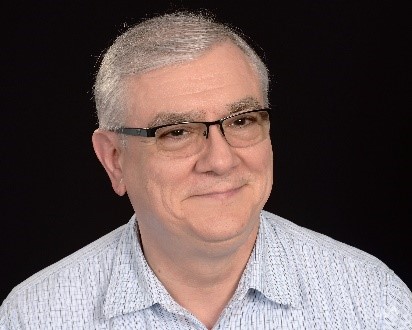 Charles Maurice, Ph.D, Associate National Program Director Sustainable & Healthy Communities Research Program, Office of Research and Development, U.S. Environmental Protection Agency
Charles Maurice, Ph.D, Associate National Program Director Sustainable & Healthy Communities Research Program, Office of Research and Development, U.S. Environmental Protection Agency
Charles Maurice is an Associate National Program Director for the U.S. EPA Sustainable and Healthy Communities (SHC) National Research Program and primarily focuses on contaminated sites and waste management topics in the SHC portfolio. Previously, he was the Superfund and Technology Liaison (STL) to U.S. EPA Region 5 (Chicago) for 16 years, during which he provided technical support to waste managers and technical support staff within Region 5 as well as other Regions. Prior to becoming an STL, he was a Region 5 hazardous waste corrective action project manager and senior ecologist and ecological risk assessor. Dr. Maurice is a manager of the SHC Regional Sustainability and Environmental Sciences (RESES) Research Program and has been a reviewer for various EPA research funding programs as well as a relevancy reviewer for the NIEHS-Superfund Research Program. Dr. Maurice received his Ph.D. in environmental plant biology from the University of Illinois at Urbana-Champaign, M.S. degree in aquatic toxicology and ecology from Bowling Green State University (OH), and B.S. degree from Eastern Illinois University majoring in environmental biology and minoring in chemistry.
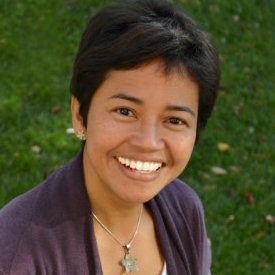 Gunarti Coghlan, P.E., Environmental Engineer, Environmental Restoration Division, Naval Facilities Engineering Command HQ
Gunarti Coghlan, P.E., Environmental Engineer, Environmental Restoration Division, Naval Facilities Engineering Command HQ
Gunarti Coghlan serves as an Environmental Engineer in the Environmental Restoration Division of the Naval Facilities Engineering Command Headquarters office (NAVFAC HQ). Gunarti leads initiatives to promote innovation technologies and remedy optimization within the Department of the Navy Environmental Restoration Program. Her experience includes management, design and implementation of remediation activities under CERCLA. Gunarti received her Bachelor of Science degree in Chemical Engineering from Universitas Sriwijaya in Palembang, Indonesia and her Master of Science degree in Environmental Science and Engineering from the Colorado School of Mines. She is a Registered Professional Engineer in the State of Virginia.
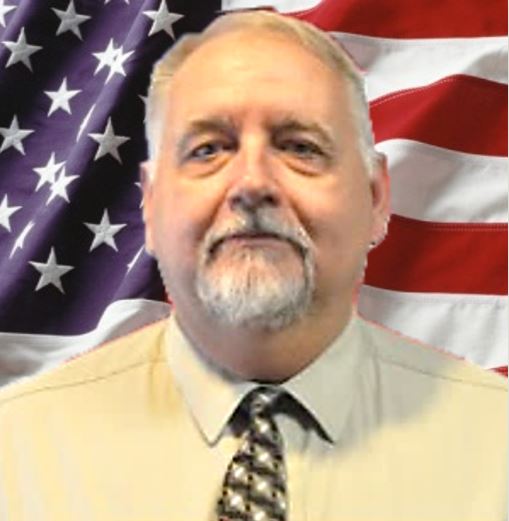 Jeffrey Davis, Ph.D., BAA Program Manager & Remediation Engineer Specialist, Air Force Civil Engineer Center
Jeffrey Davis, Ph.D., BAA Program Manager & Remediation Engineer Specialist, Air Force Civil Engineer Center
BAA Program Manager & Remediation Engineer Specialist, Air Force Civil Engineer Center
Dr. Jeffrey Davis is an Environmental Engineer with AFCEC Environmental Technology Division (CZT) in the Remedial Systems focus area. Dr. Davis has 28 years of Federal service with 10 years as a researcher with USACE and 8 years as an Army Environmental Command Program Manager. In 2016, Dr. Davis started with AFCEC. He is currently the Program Manager for the Environmental Broad Agency Announcement (BAA) overseeing numerous projects demonstrating innovative technologies to remediate PFAS and implement high resolution site characterization.
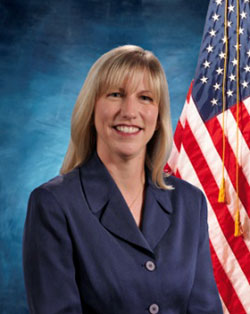 Karla Harre, NAVFAC EXWC
Karla Harre, NAVFAC EXWC
Karla J. Harre, P.E. is the Environmental Restoration Division Director at the Naval Facilities Engineering and Expeditionary Warfare Center. Her group conducts innovative technology development, provides assistance to Navy remedial project managers with technical challenges and optimization, and seeks to integrate green and sustainable remediation approaches into the cleanup process. Karla works as a steering committee member for the Federal Remediation Technologies Roundtable to encourage collaboration opportunities with other Federal agencies. Karla has B.E. in Civil and Environmental Engineering from Vanderbilt University and a MBA from Pepperdine University.
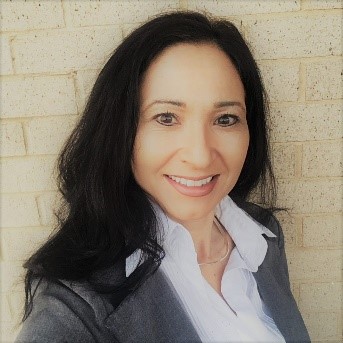 Tanya J. Gallegos, USGS
Tanya J. Gallegos, USGS
Tanya J. Gallegos is a research engineer at the U.S. Geological Survey in Reston, VA. She received a Ph.D. in Environmental and Water Resources Engineering from the University of Michigan. She is a registered Professional Engineer in the State of New Mexico. Her research encompasses inorganic geochemistry, naturally occurring radioactive materials, water use in hydraulic fracturing, environmental impacts of uranium mining, and waste as a resource at abandoned mines.
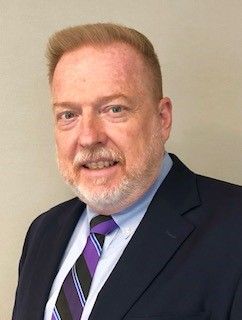 Dan Powell, U.S. EPA (powell.dan@epa.gov or 703-603-7196)
Dan Powell, U.S. EPA (powell.dan@epa.gov or 703-603-7196)
Dan Powell leads efforts to promote awareness and use of best practices and innovative technologies for site clean-up at hazardous waste sites across EPA's waste programs. He manages education, technology support, and information programs to support site project managers within EPA, States and at the local level through a coordinated program of information development and dissemination, training, and direct site support. Among the key initiatives Dan is currently leading or supporting are efforts to:
- Develop a National strategy and implement green remediation principles in the Superfund program,
- Develop a National strategy and advance innovative and state-of the practices techniques to optimize site clean-up processes from characterization through remediation,
- Advocate sampling and analytical strategies to improve the understanding of site conditions and improve remedy performance, and
- Continually improve the delivery of information and education to hazardous waste site clean-up professionals inside and outside of EPA.
For over 20 years, Dan has developed waste site cleanup information resources for both technical and non-technical audiences, and managed a number of projects to support the application of the innovative and streamlined approaches for investigation and remediation at a variety of hazardous waste cleanup and reuse sites. Dan has been with the Technology Innovation Program, now part of the Office of Superfund Remediation and Technology Innovation, since 1990. Dan came to the Agency in 1988 as a Presidential Management Intern with the Headquarters waste programs office (Office of Solid Waste and Emergency Response) and has worked in the program budget and information management offices; the Office of Underground Storage Tanks; the Region 4 Superfund Program; and the Congressional Office of Rep. Michael Bilirakis (FL). Prior to coming to EPA, Dan worked on the investment portfolio of a large Regional bank, analyzing and trading, among other instruments, municipal bonds, Federal Funds, and government-backed securities.
Dan received his Masters of Public Administration from the Woodrow Wilson School of Government at the University of Virginia in 1988, and he graduated summa cum laude with his Bachelor of Arts degree in both political science and urban studies from Roanoke College (Salem, VA) in 1985.
Moderators:
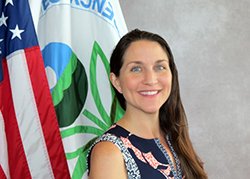 Jean Balent, U.S. EPA Technology Innovation and Field Services Division (balent.jean@epa.gov or 202-566-0832)
Jean Balent, U.S. EPA Technology Innovation and Field Services Division (balent.jean@epa.gov or 202-566-0832)
Ms Balent is on the staff of the EPA's Technology Innovation and Field Services Division where she has worked to collect and disseminate hazardous waste remediation and characterization information since 2003. Ms Balent manages the Clean Up Information Network website and actively supports online communication and collaboration resources available to EPA. She formerly worked with the US Army Corps of Engineers Environmental Engineering Division in the Buffalo District. Ms Balent was also a member of the SUNY-Buffalo Groundwater Research Group where she constructed and tested large scale models of groundwater flow. Ms Balent has also conducted research relating to the Great Lakes, environmental remediation, and brownfields re-development. She holds a Bachelor's degree in environmental engineering from SUNY-Buffalo and a Master's degree in Information Technology from AIU.
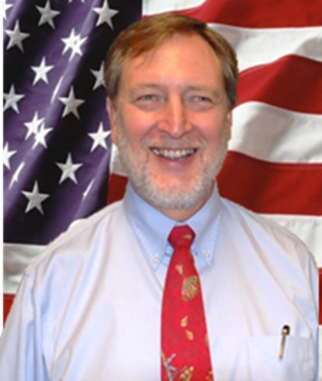 Kent Glover, Ph.D., U.S. Air Force Civil Engineer Center (AFCEC) (kent.glover@us.af.mil)
Kent Glover, Ph.D., U.S. Air Force Civil Engineer Center (AFCEC) (kent.glover@us.af.mil)
Dr. Glover has been involved in groundwater and vadose zone remediation since the early 1980s. Currently, he is the Air Force Subject Matter Expert (SME) for Remediation Systems and provides technical leadership in remedy selection, implementation, performance evaluation and optimization. He also provides expertise in numerical modeling of contaminant fate and transport, and remediation of non-aqueous phase liquids. Before coming to the Air Force in 2010, he was a Principal Scientist for several engineering firms providing consulting services to private sector and governmental clients. From 1976 until 1989, he served in the U.S. Geological Survey as a hydrologist for groundwater contamination and water resources projects across the western United States. He holds a Ph.D. and M.S. in Environmental Science and Engineering from Colorado School of Mines and a B.S. in Watershed Science from Colorado State University.
Webinar Slides and References:
- Highlighs from Session 1: Grand Challenges, Research Gaps, and Priorities
- Senior Leadership Questionnaire
- Slide Presentation for Kent Glover, Ph.D.; AFCEC
- Slide Presentation for Heather Henry, Ph.D.; NIEHS
- Slide Presentation for Andrea Leeson, Ph.D.; SERDP & ESTCP
- Slide Presentation for Geoffrey Plumlee, Ph.D.; USGS
- Slide Presentation for Patricia Holahan, Ph.D.; U.S. NRC
- Slide Presentation for Mark Gilbertson; U.S. DOE
- Slide Presentation for Charles Maurice, Ph.D.; U.S. EPA
- Slide Presentation for Gunarti Coghlan, P.E.; NAVFAC
- Slide Presentation for Jeffrey Davis, Ph.D.; AFCEC
- Member Agency Announcements
- Slide Presentation for Dan Powell; U.S. EPA
Webinar Slides and References:
- Highlighs from Session 1: Grand Challenges, Research Gaps, and Priorities
- Senior Leadership Questionnaire
- Slide Presentation for Kent Glover, Ph.D.; AFCEC
- Slide Presentation for Heather Henry, Ph.D.; NIEHS
- Slide Presentation for Andrea Leeson, Ph.D.; SERDP & ESTCP
- Slide Presentation for Geoffrey Plumlee, Ph.D.; USGS
- Slide Presentation for Patricia Holahan, Ph.D.; U.S. NRC
- Slide Presentation for Mark Gilbertson; U.S. DOE
- Slide Presentation for Charles Maurice, Ph.D.; U.S. EPA
- Slide Presentation for Gunarti Coghlan, P.E.; NAVFAC
- Slide Presentation for Jeffrey Davis, Ph.D.; AFCEC
- Member Agency Announcements
- Slide Presentation for Dan Powell; U.S. EPA
Additional Resources:
If you have a suggested topic or idea for a future CLU-IN internet seminar, please contact:
Technology Integration and Information Branch
PH: 202-566-0832 | Email: balent.jean@epa.gov
Technology Integration and Information Branch
PH: 202-566-0875 | Email: adam.michael@epa.gov





